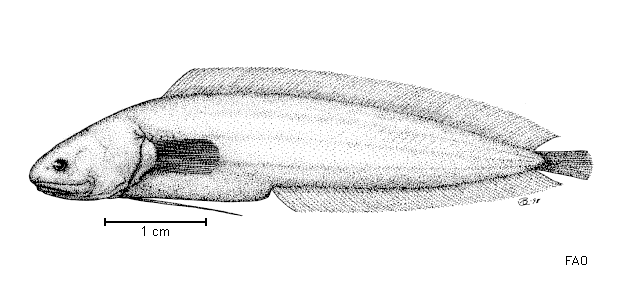| Dinematichthyidae (Viviparous brotula) |
| 5 cm SL (male/unsexed); 5.3 cm SL (female) |
|
reef-associated; marine |
| Southwest Pacific: eastern Australia. Record from Japan (Machida, 1992) is erroneous (Ref. 34024). |
|
Dorsal soft rays (total): 93-104; Anal soft rays: 64-76; Vertebrae: 45-47. This species possess the following set of characters: anterior nostril low on snout; copulatory organ of male with a simple and small flap-like pair of (outer) pseudoclaspers; small, size < 5.5 cm SL, short predorsal length 26.5-30.7 % SL; 13-14 precaudal vertebrae, 45-47 total vertebrae; D 93-104, A 64-76, branchiostegal rays 6-7, V in D 2.4-2.6; scale patch only on cheek, scaleless operculum; presence of upper preopercular pore; joined opening for the first and second lower preopercular pore; otolith elongate, its length to height 2.3-2.4, its sulcus with nearly straight dorsal and convex ventral rim, short with otolith length to sulcus length 2.0, colliculi is fused; maxilla expanded posteroventrally; short anterior anal fin pterygiophore (Ref. 76869). |
| Common species found on shallow reefs (Ref. 34024). Benthic species which occurs in inshore waters (Ref. 75154). |
|
Least Concern (LC); Date assessed: 16 August 2019 Ref. (130435)
|
| harmless |
Source and more info: www.fishbase.org. For personal, classroom, and other internal use only. Not for publication.
